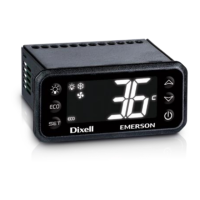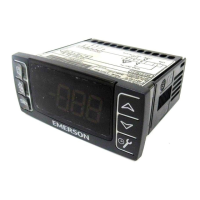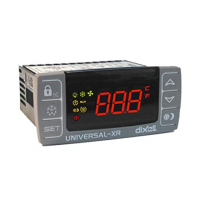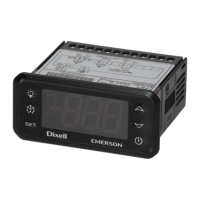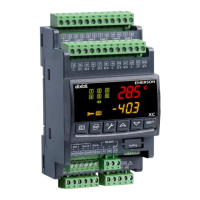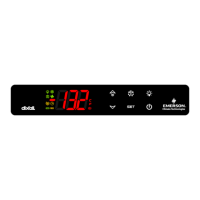User Manual Chapter 4
GFK-1742F Jan 2020
Configuration 111
The following data is given:
•
2000-line encoder (x4 = 8000 counts per encoder revolution)
•
20:1 gear reduction
•
14.336-inch pitch diameter spur gear
•
Inch desired programming unit (.01)
Although several approaches are possible, the most straightforward is to base
the calculations on a single spur gear revolution.
1.
First determine the number of User Units per spur gear revolution:
14.336-inch pitch diameter * π (pi) = 45.0378 inches circumference
45.0378 inches / 0.01-inch desired programming units = 4503.78
User Units per revolution of spur gear
2.
Then determine the number of encoders counts per spur gear revolution:
3.
Then check the value of the User Units to Counts ratio. The ratio must be
in the 8:1 to 1:32 (8 to 0.03125) range and the two numbers must be in
the 1 to 65535 range.
4503.78 User Units / 160,000 encoder counts = 0.02815 or 1:35.5
This ratio is too small, so something must be changed. Any of the
following system components could be changed to solve the problem:
—
Change the spur gear diameter to 15.92 inch or larger
—
Change the encoder lines per revolution to 1800 or less
—
Change the gear reduction to 18:1 or less
—
Change the desired programming unit to 0.001 inch
By far, the easiest component to change is the desired programming unit
to 0.001 inch.
4.
Recalculate to determine the revised User Units per revolution using
0.001-inch programming unit.
14.336 inches diameter * pi = 45.0378 inches circumference
45.0378 inches / 0.001-inch programming unit = 45,037.8 User Units per
revolution of spur gear
Thus, the User Units to Counts ratio is 45,038 / 160,000 = 0.2815 or
about 1:3.6, which is within the valid ratio range.
So, a 45,038 / 160,000 ratio would be used except that 160,000 is
larger than the maximum 65,535 range value. Dividing both numbers
by 10 solves this to make the ratio 4,504 / 16,000. Note that in the

